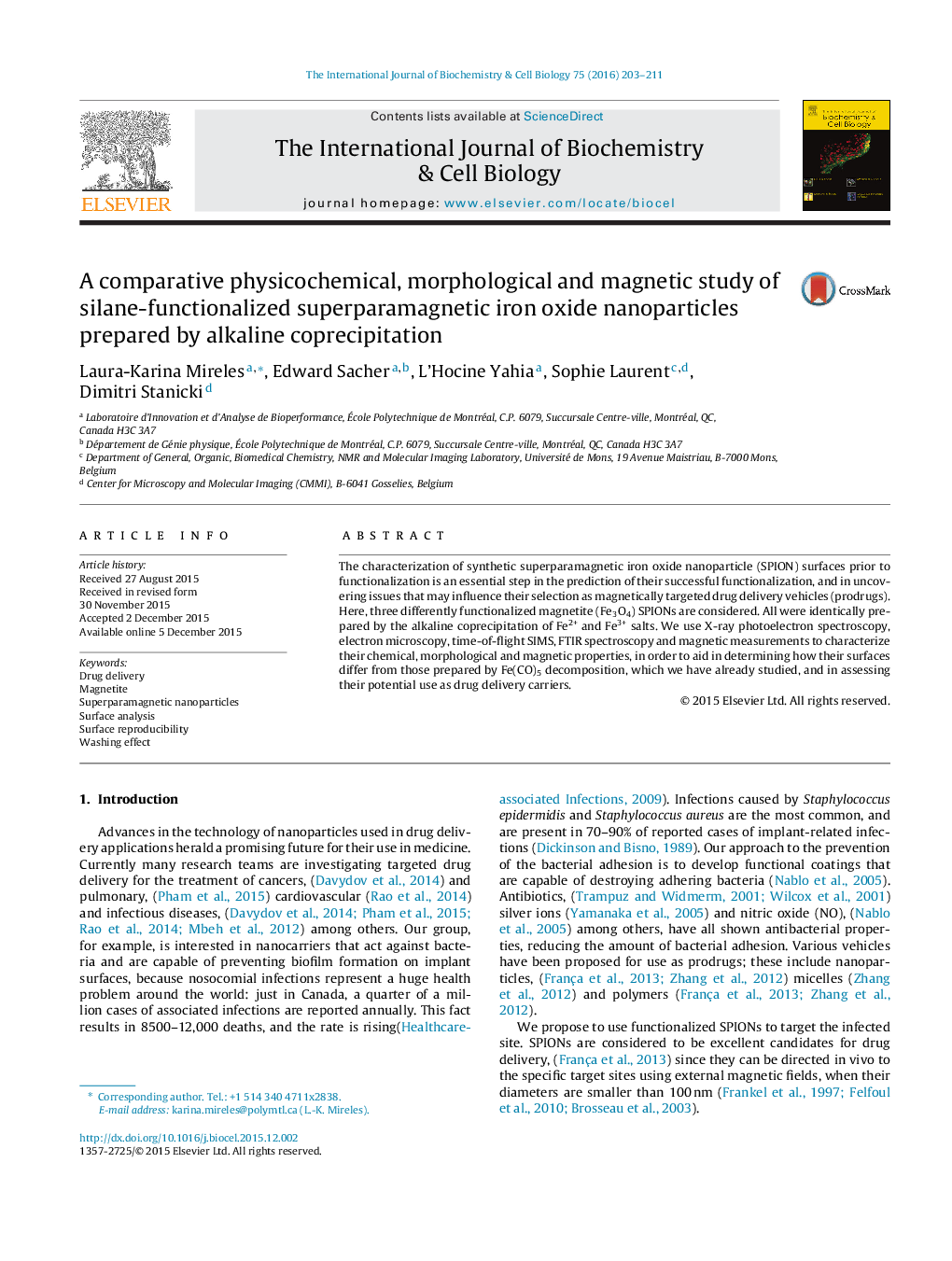| Article ID | Journal | Published Year | Pages | File Type |
|---|---|---|---|---|
| 1983393 | The International Journal of Biochemistry & Cell Biology | 2016 | 9 Pages |
•Detailed surface characterizations of core–shell superparamagnetic magnetite nanoparticles to probe the chemistry of the surface, predict future functionalization for drug delivery, and understand batch-to-batch repeatability, protein corona formation and cytotoxicity effects.•Comparison of product reproducibility and washing effect by dialysis on surfaces.•Batch-to-batch variation of surface chemistry is found in all the samples.
The characterization of synthetic superparamagnetic iron oxide nanoparticle (SPION) surfaces prior to functionalization is an essential step in the prediction of their successful functionalization, and in uncovering issues that may influence their selection as magnetically targeted drug delivery vehicles (prodrugs). Here, three differently functionalized magnetite (Fe3O4) SPIONs are considered. All were identically prepared by the alkaline coprecipitation of Fe2+ and Fe3+ salts. We use X-ray photoelectron spectroscopy, electron microscopy, time-of-flight SIMS, FTIR spectroscopy and magnetic measurements to characterize their chemical, morphological and magnetic properties, in order to aid in determining how their surfaces differ from those prepared by Fe(CO)5 decomposition, which we have already studied, and in assessing their potential use as drug delivery carriers.
Graphical abstractFigure optionsDownload full-size imageDownload high-quality image (100 K)Download as PowerPoint slide
